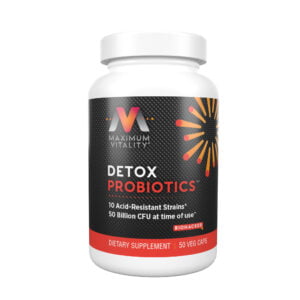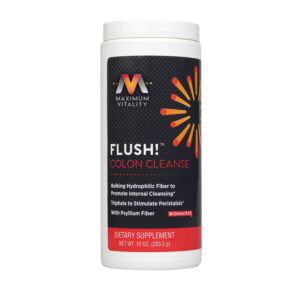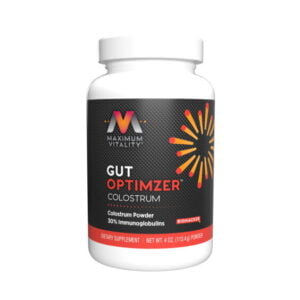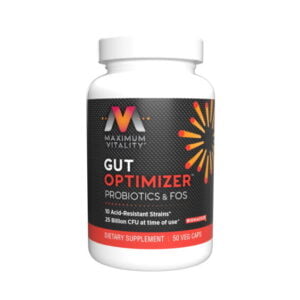Environmental Contaminants and Toxins
Environmental contaminants can affect every organ and function in the body. When they accumulate in the brain, one will eventually notice less focus, memory issues, slower reaction time. When they accumulate in the mitochondria, the tiny organelles in every cell that produce cellular energy, less energy will be available for every bodily function such as cognitive, muscular, heart, liver, kidney, immune, and healing functions. When the body is overwhelmed with micro-contaminants, in lieu of not being able to eliminate all the toxins, the body isolates them in lipids (fat) that is most often stored around the belly, hips and thighs.
Environmental contaminants are pervasive in our modern world. This article will help you understand environmental health, appreciate contaminants, and provide some tools to avoid and eliminate them from your body.
Maximum Vitality has been a sponsor of the Environmental Health Symposium for several years. At their conferences, some of the most current science and training on environmental contaminants, endocrine disruptors, and ways to identify, minimize, and treat the body burden of contaminants are presented.
Surprisingly, there are more Naturopathic Doctors presenting than standard Medical Doctors, and the audience is composed of more Medical Doctors than ND’s.
In 2018, Dr Joe Pizzorno published his book The Toxin Solution: How Hidden Poisons in the Air, Water, Food, and Products We Use Are Destroying Our Health–AND WHAT WE CAN DO TO FIX IT. He founded and served twenty-two years as president of Bastyr University, the country’s first and largest fully accredited university of natural medicine. He introduced his book at the conference and we spent some time discussing how we can work together to combine our theories to further understand the pathways of environmental toxins into and through the body and enhance treatments. I highly recommend his book which can be found on Amazon.
The book lays out research describing the linkages between specific environmental toxins and specific diseases. My work shows the pathways and protective mechanisms that are breached for the toxins to do their insidious damage.
Dr. Pizzorno teaches that good health is influenced by two critical factors: your exposure to environmental toxins and your ability to process them in your body. While lifestyle, diet, and genetics all play a major role in well-being, many symptoms of declining health and disease are rooted in toxic body burden—the exposure to a barrage of heavy metals, radiation, chemicals, EMFs, and pollution that are a part of modern life. While the human body has built in processes to detoxify, it often has difficulty dealing with the elevated levels of toxins in our environment today.
Major Toxin Categories
Food
Toxins in food include herbicides, pesticides, gluten for many people, GMO food that has been enhanced to withstand (and absorb) a higher dose of herbicides. Monsanto has found a new use for Roundup – as a drying agent that keeps food from spoiling while being transported and in storage.
Water
Water is a source of chlorine and chlormines that are used in urban water supplies to keep bacteria from growing in the water delivery system. That is great, but chlorine remains in the water when you drink it. Shower, and bathe with it. It kills your protective microbiome (beneficial bacteria which protects your body from other environmental contaminants).
Unfortunately, water is a source of pesticide runoff from farms, excrement runoff from ranches, toxic dumping from factories, a collector of airborne toxins that settle out of the atmosphere, pharmaceutical drugs dumped down the toilet, and many other toxins. Urban water treatment systems were designed to remove sediment, bacteria, and many other contaminants, but not prescription drug molecules created in the laboratory or trace metals, such as aluminum dust which is used to seed rain clouds in farming communities.
Water bottled in plastic is often a source of BPA and other unsafe chemicals from plastics, which may act as endocrine disruptors.
Air
The air we breathe contains environmental contaminants from hydrocarbons, ozone, particulates, smoke, soot, ash, and plastics.
Who chooses to live near or downwind from a highway, airport, chemical plant, oil field, refinery, or factory? Well, I have lived near many of them in great neighborhoods in Los Angeles. These neighborhoods included West Hollywood, near the Beverly Center and Cedars Sinai Medical Center, where oil production still takes place, though it is camouflaged and out of sight. I lived in Beverly Hills, where up until a few years ago, there were working and leaking oil rigs on the high school athletic field adjacent to Century City. I worked in the city of El Segundo in office buildings for 16 years. The city is surrounded by the Hyperion Water Treatment Plant and Chevron Oil Refinery to the west, Los Angeles International Airport (LAX) to the north, and the 405 (one of the busiest highways in the nation) to the east.
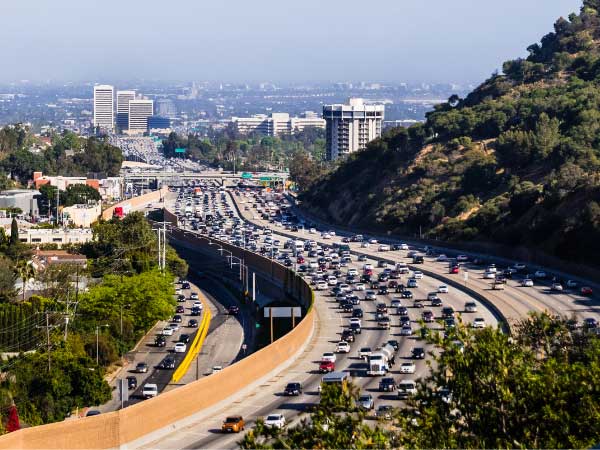

Then there is the notorious smog in L.A. The horizon used to look a greenish brown on bad smog days. It doesn’t happen as often due to an immense amount of regulations and costs imposed in California to enhance the cleanliness and safety of the air.
Lately we have had massive fires in California. Not only do these blow ash into the air, they fill the air with burned environmental contaminants that were relatively benign, having settled on the ground. Smoke from the recent California fires has been traced as far away as Europe and even Russia.
Chances are your community has some of these sources of air pollution or other environmental contaminants.
Indoor Environmental Contaminants
Then we head indoors at home, at the office, at the mall, in the car or elsewhere, where the air might be worse. We have off-gassing from plastics, such as, evidenced as a new-car smell. We have high or low voc (volatile organic compound) paint residues, carpet off-gassing, pressed wood used in furniture and cabinetry or plywood (glue) off-gassing, and so many other sources of indoor environmental pollution such as mold and mildew that is not cleared by open windows or heating and air conditioning systems. A lower cost HVAC system is designed to use filters that barely catch large dust particles in the air, let alone, small particles such as bacteria, viruses, hydrocarbons, etc. In these systems, you can’t just install a higher efficiency filter because it will put too large a drag on the system mechanicals, prematurely wearing out the major units. But you can upgrade the filters to a limited extent without damaging the equipment for better environmental health.
Your lungs are a great filtration system, until they too reach their limit, tipping point, or body burden. What does the body do with the environmental contaminants that it removes from the air? The mucosal system washes those contaminants out of the lungs and deposits them into the gastrointestinal tract (gut), where in susceptible people, that may be the place where air pollution causes the most harm. Who would have thought that that air pollution directly affects your GI tract?
A contractor story: The painting and general contractors left behind open and partially sealed cans of left-over paint, stacked right next to the heating and air conditioning system and blowers in the garage. This is how to keep your house circulating fresh environmental contaminants for years.
Speaking of the garage, especially if it is attached to the house, there should be an exhaust vent, especially if you use it for cars, not just storage. Your car puts out the most hydrocarbons when starting cold, when hot from being in the sun (from plastics), and for hours after being driven.
Cleaning Supplies and “Air Fresheners”
Look at all the warnings on your cleaning supplies – use in a well-ventilated space, avoid prolonged exposure to odor or skin, do not allow to touch skin, rinse for 10 minutes under running water, call a poison control center if … . That’s an innocuous way of saying these products are dangerous for humans. I’ve had contractors totally avoid reading the instructions and warnings. They use chemicals and leave behind a Linus-like cloud of environmental toxins.
I do not recommend any air fresheners. If a remedy is needed, cleaning the source of the smell, mold, mildew, pet dander, cigarette smoke, etc. with non-toxic cleaners, such as mild soap and water, and airing out the space is preferred. “Perfuming the pig,” especially with hydrocarbon-based chemicals, is not the environmental healthy answer.
Anti-toxin Strategies
Mastering your body and its environment includes:
- Avoid toxins in food, water, and the products you use
- Support your microbiome and your gut (see the Gut Health Section)
- Assist your body to release the toxins
- Repair some of the damage toxins have caused
Fortunately, our bodies have a tremendous capacity for healing and recovery. Take these steps to improve your health now and in the future.
Supplement Recommendations for Removal of Environmental Contaminants and Toxins
Supplements recommended by Lyn Patrick, ND, Cofounder of the Environmental Health Symposium and Garry Gordon, MD:
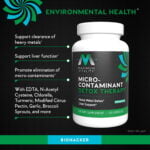
Micro-Contaminant Detox Formula to support slow heavy metal chelation, and support the liver in clearing many other micro-contaminants.
Supplements recommended by Walter Crinnion ND, Cofounder of the Environmental Health Symposium:
“Howard, your Maximum Vitality multivitamin has a great combination of what I call “anti-toxicants” and would be a perfect fit for our community.” Maximum Vitality is a great adjunct to Micro-Contaminant Detox Formula to support healthy vitamin and mineral levels during detox.
“I would encourage you to highlight the CuraFlame Curcumin and the Flush! Colon Cleanse (hardly anyone has good fibers now), in a section of your product display to deal with pollutant overload.”
Supplements recommended by Green Med Info by Sayer Ji:
Gut Optimizer – Probiotics contains a wide array of 10 strains and 25 billion CFU. Specific probiotics in this advanced formula reduce toxicity in the following ways.
Gluten Toxicity – Gluten from wheat reduces zonulin, the molecule that helps maintain tight junctions between intestinal cells. Loss of this intestinal integrity is known as leaky gut. Bifido bacteria may reduce the immuno-toxic properties of gluten peptides by fermenting them into non-toxic peptides.
Pesticide Toxicity – Lactic acid probiotic strains isolated from Korean kimchi, a fermented cabbage dish, are capable of degrading four different organophosphorous based insecticides. For the lactic acid, these human poisons are a rich nutrient source of phosphorus and carbon.
Bisphenol-A (BPA) Toxicity – Bisphenol A has endocrine-disrupting properties in humans. It is a petrochemically-derived toxicant, often used in plastics. BPA is found throughout the environment – in the oceans, on the ground from rain and runoff, and thus found in foods – plant, fish, and animal. Plastics are used everywhere in our society. BPA accumulates in animals and in the human body. It has been linked to a wide range of health problems. Researchers have shown Lactobacillus casei and Bifidobacterium breve in the animal model each reduce absorption of BPA in the intestines and facilitate its excretion.
Perchlorate Toxicity – perchlorate is a component of jet fuel that is discharged in the air and contaminates soil, water and food. Researchers have found that Bifidobacterium Bifidum a beneficial bacterial strain is capable reducing perchlorate toxicity.
Aspirin Toxicity – millions take it on a daily basis without full knowledge of how it is affecting them. Researchers have found that Lactobacillus casei, another probiotic bacteria protects intestinal mucosa from damage done by aspirin.
Sodium Nitrate Toxicity – Prepared and packaged foods are preserved with nitrates, which form DNA-damaging nitrosamines. Researchers have found that Lactic acid bacteria from kimchi reduces the toxic effects of sodium nitrate.
References
- Environmental Health Symposium
- Pizzorno, Joseph; The Toxin Solution: How Hidden Poisons in the Air, Water, Food, and Products We Use Are Destroying Our Health–AND WHAT WE CAN DO TO FIX IT
- Saad Y Salim; Gilaad G Kaplan; Karen L Madsen; Air pollution effects on the gut microbiota:A link between exposure and inflammatory disease; Gut Microbes 5:2, 215–219; March/April 2014; © 2014 Landes Bioscience.
- 8 Ways Microbes Can Save Us From Ourselves: Could bacteria and related microbes, widely believed to be a primary cause of disease, explain how we are capable of surviving through the self-created chemical nightmare of industrialized society? Posted on: Thursday, March 7th 2019 at 3:30 am. Written By: Sayer Ji, Founder


